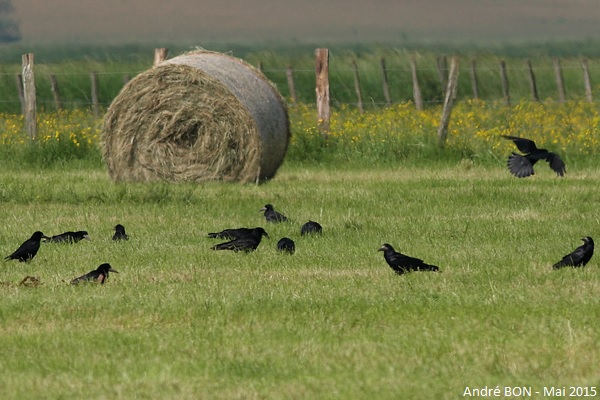
| Rook (Corvus frugilegus (Linnaeus, 1758)) |

|
|
Scientific name: Corvus frugilegus (Linnaeus, 1758) Common name: Rook French name: Corbeau freux Order: Passeriformes Family: Corvidae Size: Body size: 44 to 46 cm; Weight: 280 to 340g; Wingspan: 81 to 99 cm. Habitat: Plains and steppes with large open areas. Small copses or rows of trees are required for nesting. Food: Rooks are omnivorous birds which feed on the ground (earthworms, gastropods, insects, caterpillars, etc.), plant materials only represent about one third of the feeding. Nesting: Rooks nest in colony on top of trees. The nests are rough assembly of sticks consolidated with earth and lined with moss or other materials. There are 2 to 6 eggs per clutch. Migration: Partially migratory. Populations of western Europe are sedentary. Populations of northern regions, central Europe and central Asia move towards west or south in winter. Geographic area: The Corvus frugilegus frugilegus subspecies is found from western Europe to central Asia east to the Altai mountains. The Corvus frugilegus pastinator subspecies is found further east to the extremity of Asia bordering the pacific Ocean. The Corvus frugilegus frugilegus subspecies has been introduced to New Zeeland. |
Rooks have a black plumage with a bluish sheen. They show a whitish area around the bill which permit to tell them apart from Carrion Crows (Corvus corone). The bill is grey, long, pointed and slightly down-curved. In flight, the wings appear long and wide. The tail is short and rounded. |
| [To know more about the Rook] [Top] |

|
I am used to observing numerous Rooks in meadows and cultivated areas but I have neglected this species while taking bird pictures. I will need to use an efficient camouflage to shoot closer pictures as all the observed flocks were very shy. |